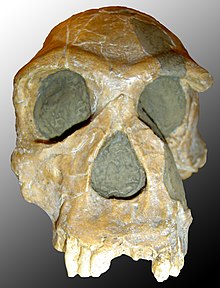First, I want to shift the concept of "ideas" to what I think is a better term, "material." In SF we tend to think of ideas as the basis of a story. Consider these three examples:
- A Fire Upon the Deep, Vernor Vinge: Computation gets more efficient as you proceed away from the galactic core enabling higher order functions
- Stranger in a Strange Land, Robert Heinlein: A human raised as a martian.
- A Canticle for Leibowitz, Walter M. Miller, Jr: After the apocalypse knowledge kept as part of a Catholic monastery
I think a writer brings everything he has to bear on a given story. Everything is material. Everything is material. The thoughts you had at your dead mother's funeral. The look of your puppy as it died in the street. The inappropriate thoughts you kept to yourself the first time you undressed at gym.
When I went to Clarion, Robin Scott Wilson said that writing was the only professions where you could drop your drawers, point to a big pimple on your butt and say look at that!
See? Everything is material.
So the problem with "ideas"-- or rather, material-- should be more what to leave out rather than what to put in. Material is everywhere. Looking at technology news today: "The Facebook Camera." Okay. Consider a world where every image is public. What does that mean? "Climate change allows once rare British butterfly to thrive." What is the state of Georgia going to do when the climate pushes animals currently living only in Florida north?
The point is not the material. The point is how you see the material.
Think of a black box. You want to know what's inside of it. What do you do? You pick it up. You feel its shape. You shake it. Stand it one one end and listen. Stand it on the other end and listen. What do you do when you get a new car? Take it out for a drive. Lean into the curves a bit. Check out the radio. What do you do when you get a new phone? Call somebody. Check the menus.
The first step of a writerly mind is to pick up a piece of material and examine it. Cuttlefish communicate by color. Interesting. How do they communicate? Flash pictures? Shapes? Maybe they use some sort of code.
The next step is sort of like how babies play with blocks. They fit them together and take them apart. They match them by color. By shape. By which ones fit with which other ones.
Back to the cuttlefish: What does a cuttlefish think about? Mating and eating probably. Do they play? Can a cuttlefish get bored? What does it mean for a cuttlefish to be bored-- what does it mean to play at all? If a cuttlefish was playing would we know it? Would we know it if it were bored? What would cuttlefish playing look like? Or cuttlefish boredom?
The writerly mind might try to answer these questions. Research is one answer-- put "bored cuttlefish" into Google and see what you get. Or you can imagine a bored cuttlefish. How? When I'm bored I might do something I know I like-- eat, maybe. Walk around. What would a cuttlefish do? Well, bored eating for a cuttlefish involves hunting. So it might go looking for a crab. That's a lot of work to alleviate boredom. The idea is to alleviate boredom without too much effort. Well, the cuttlefish has this color thing. Maybe it flashes at nothing-- doesn't sound satisfying, does it? Think like a cuttlefish. Hey! Look at this neat pattern. Where's Joe? Go find him. Hey, ,Joe! Check this out.
The idea is just there to catch interest. The material are the sticks from which you build the story. But what makes the story go is playing with the two.




